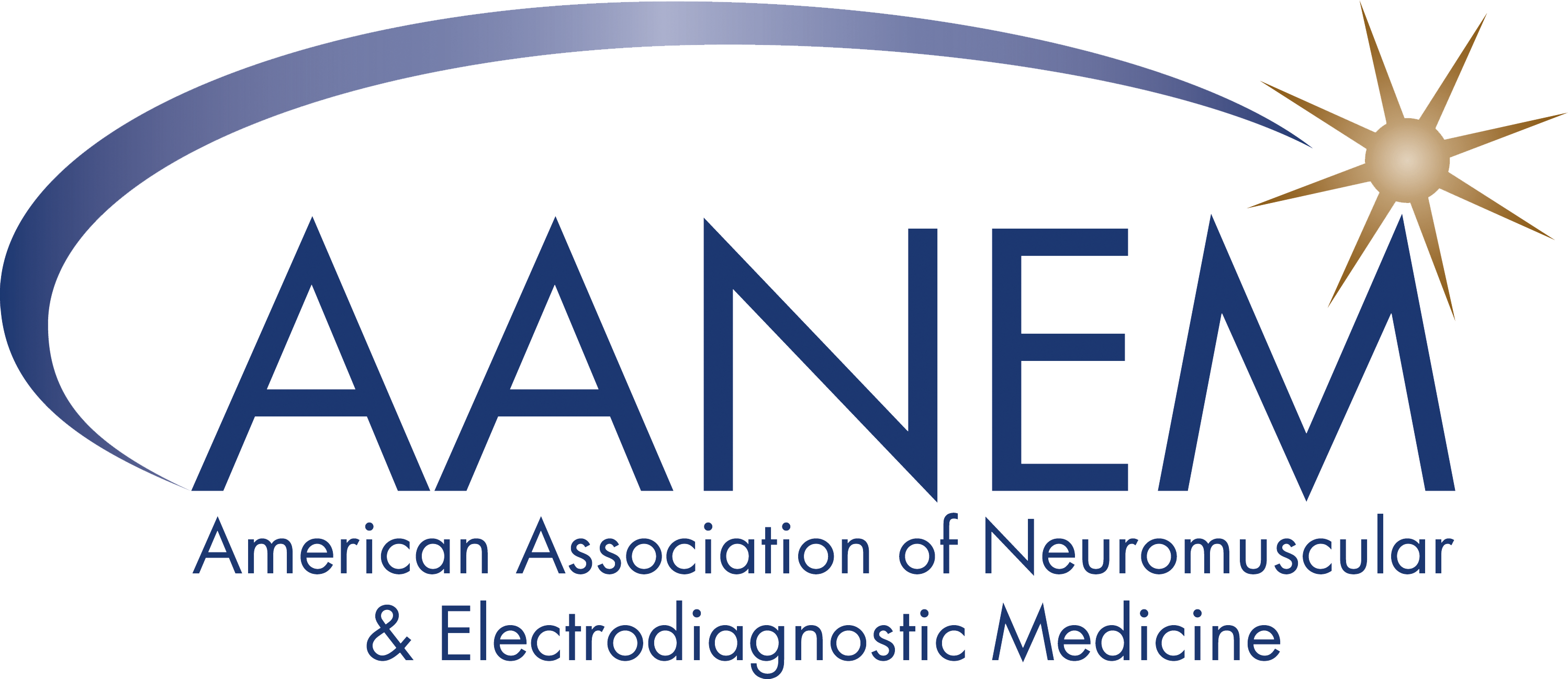Press and Media
View the latest AANEM Achievement Award winners, the American Neuromuscular Foundation (ANF) Abstract Award winners, and the latest AANEM news articles on News Express.
Frequently Asked Questions
Q: When will be content of abstracts be viewable, as opposed to just the titles?
A: The abstract content will be available at the annual meeting during the Poster Hall hours. We do not provide abstract presenter information or slides ahead of time. All available information can be found in the AANEM Abstract Guide online when it becomes available.
Q: How do I reach out to abstract or session presenters for an interview?
A: We do not offer member contact information. To connect with abstract or session presenters, review the AANEM Annual Meeting Program when available. Find the topics of interest and connect with the presenter after their lecture or during their abstract poster session time. Currently there is no interview option for virtual attendees.
Q: When can I share information?
A: The embargo on the abstracts themselves is lifted when they have been published in Muscle & Nerve and online in the AANEM Abstract Guide. However, the additional information beyond what is in the abstract itself is still embargoed.
AANEM requires information that goes beyond that which is contained within the abstract, e.g., the release of data not included in the abstract, discussion of the abstract done as part of a scientific presentation, etc. to be embargoed until the start of the annual meeting. Please see the Abstract Embargo Policy.
Q: Will the Abstract Award Reception feature the best posters?
A: The Abstract Award Reception is a social hour in honor of the abstract award winners where all authors, including award winners, will be available to discuss research.
Q: Original research is ONLY presented as posters, correct?
A: Yes - the research is presented in the Poster Hall via abstract posters.
Science News: Dry Needling Versus Corticosteroid Injections To Treat Tendinopathy: A Systematic Review
Submitted by: Sarah Breevoort, MD, PhD
Edited by: Rebecca O'Bryan, MD
Citation: Aman IM, Zutshi K, Singla D. Dry needling versus corticosteroid injections to treat tendinopathy: a systematic review. J Int Soc Phys Rehabil Med. 2023;6(3):77-82. doi:10.1097/PH9.0000000000000014.
Summary: This study is looking at the comparison of dry needling to steroid injection for treating tendinopathy.
During physical activities and exercise there is increased stress and force exerted on the tendon which increases the risk of both traumatic and overuse injury. Tendon injuries have become a common health issue and often is a musculoskeletal mimic that is commonly referred for electrodiagnostic testing. Dry needling can be used to treat muscles, tendons, and neuromuscular bundles and can lower central and peripheral sensitization by affecting substance P, endorphin, and local blood flow. Several studies suggest that dry needling has a positive influence in treating tendinopathies. Similarly, corticosteroid injections are used to treat tendon injuries, however, also have several disadvantages and risks.
In this systematic review the authors compare dry needling with steroid injections for tendinopathy and their efficacy in reducing symptoms.
The authors identified 121 articles which included dry needling or corticosteroid injections as their treatment protocol and any type of tendinopathy as a condition. Based on eligibility criteria ultimately four articles were selected for review. In these studies, dry needling versus single dose corticosteroid methylprednisolone acetate injections were compared and follow up was done at several weeks, months, and up to 1 year in one study. Outcome measures included visual analog scale, numerical pain rating scale and functional outcome measures to compare the effect of dry needling and steroid injection.
Comments: Corticosteroid injection and dry needling have been widely used for the treatment of musculoskeletal conditions; however, it is unclear which intervention is the most effective. This study is one of a few recent systematic reviews that seeks to address this matter. This systematic review is a recent attempt to address the efficacy of in a head-to-head comparison of both dry needling and corticosteroid injections for the treatment of tendinopathy. The authors admit the limitation of small sample size of randomized controlled trials highlighting a potential opportunity for future studies. Both dry needling and corticosteroid injections are widely used for the treatment of tendinopathies, however, corticosteroid injections have more inherent risks, require more training or expertise for administration, and may not be as easily available understanding the comparative effectiveness has significant clinical utility. This review highlights the need for additional studies but does demonstrate the efficacy of dry needling for long-term treatment.
This article has relevance for the AANEM audience as many referrals for EDX studies are musculoskeletal mimics. Many tendinopathies present with pain at tendon insertion sites where common mononeuropathies also may cause discomfort. If EDX physicians or allied health staff could offer in clinic treatment that is both relatively safe and effective this could enhance patient care as well as increase provider satisfaction by being able to offer in lab treatment for study patients who often have normal EDX tests.
Articles of Similar Interest:
